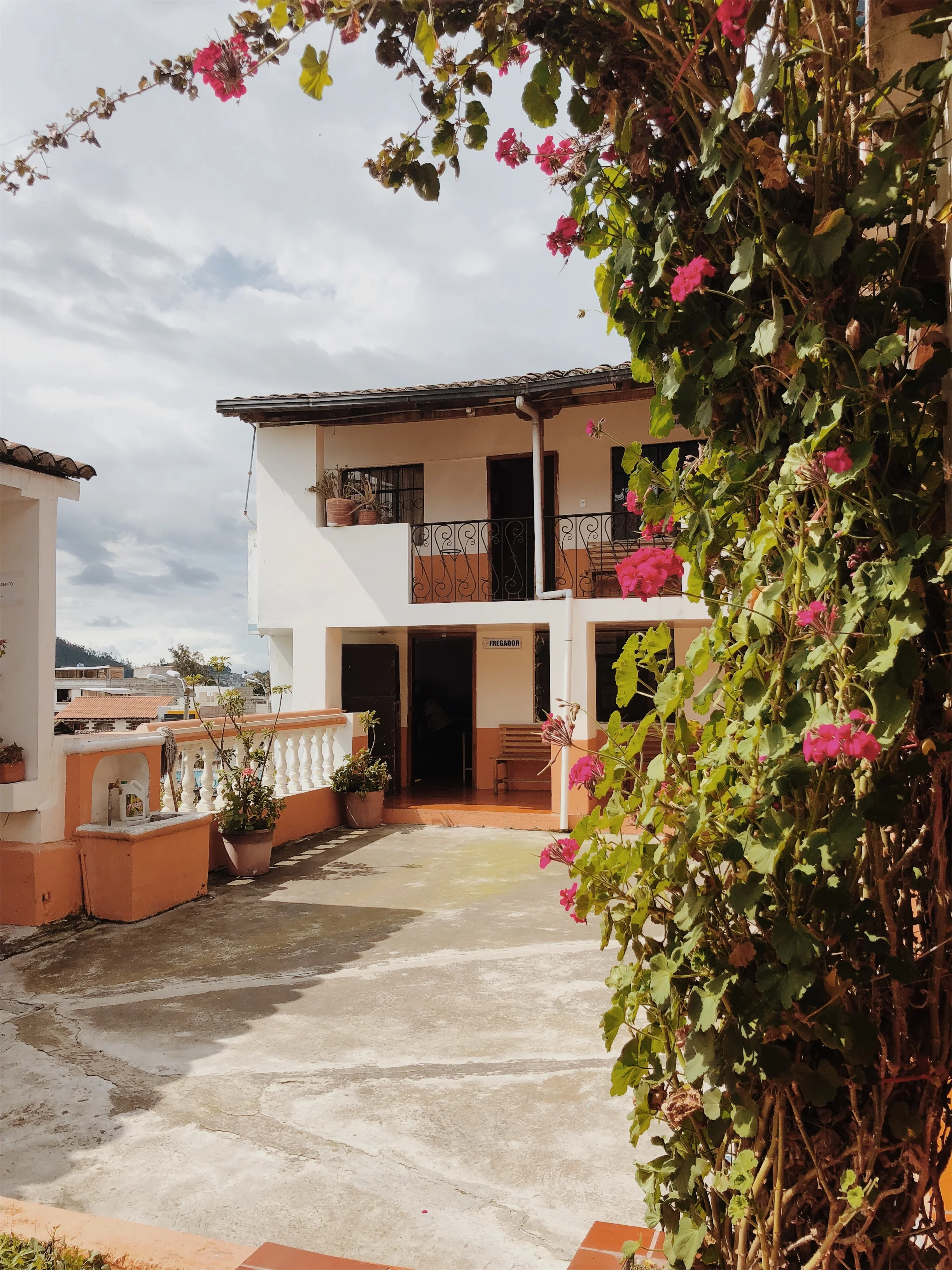Ecuador: Week 4
Warning: This post contains sensitive topics and photos. Topics include abortion and delivery, and photos include a C-section. Discretion advised!
“Moaning in pain, the woman clenched her fists around the metal safety bars on her hospital bed, writhing and contorting her pregnant body as much as her belly would allow. The medical students ignored her. Some even rolled their eyes at her. I couldn’t understand; I guess I hadn’t been desensitized to it yet.”
The first day in the maternity delivery was slow. I showed up a half hour early in true Brooke style, and my doctor for the week, Dr. Viteri, showed me where to put my things and change into my blue scrubs. I met him back in "Sala C", a large room with easily 60 beds, always half full of women post-delivery. I tagged along beside him and a few medical students as he made his way from one bed to the next, completing his morning rounds. After about an hour, we relocated to the delivery wing, where I yet again had to change (this time into a baggy pair of green scrubs provided by the hospital, complete with a blue hair net and green shoe covers). I had no idea what to expect when I walked through those doors donning my new clothes.
The first thing I saw was a mass of green scrubs and blue hairnets huddled around the door of an operating room. Curious, I wandered over and peaked through the crowd to see a woman, postpartum, being stitched up after vaginal delivery. A little shocked, I stumbled back and into Dr. Viteri. He smiled a little and told me to come with him, as we made our way into the labor room of the delivery wing. Only one woman occupied the room, and some medical students were in the middle of giving her an exam to check how dilated she was. I listened in as the medical students filled in Dr. Viteri on the patient's history. Satisfied, he beckoned me to follow him to another room, where a girl no older than 16 was laying on a bed. Her belly was barely showing; honestly, if we weren't in the maternity hospital I wouldn't have known she was pregnant.
Dr. Viteri performed a transvaginal ultrasound, and I watched the ever-changing black and white screen of the ultrasound closely. Suddenly, I saw it: although small, you could clearly make out the shape of a head, body, and what was the beginning of arms and legs of the tiniest fetus. I had never seen something like this and was immediately moved and in disbelief. Until I heard the whimpering of the girl on the bed. Holding her face in her hands, she was holding back sobs. Discomfort swept over me as I realized this was her first ultrasound to confirm her pregnancy; a pregnancy she didn't want.
In Ecuador, abortion is illegal. This has pushed some women to desperate measures as they illegally purchase mifepristone and misoprostol to have medical abortions, or undergo off the record abortions in consultation offices of doctors and nurses. This young woman was now either facing this hard truth or motherhood, and no one from her family was there to help her. Later in the week, on my last day, a 21 year old woman who had opted for medical abortion was being monitored. Since we were the same age, I was struck particularly hard by the situation, and was saddened by the choices she was faced with.
The week wasn't all bad though. Far from it. I witnessed eight births that week (four of which were in one hour of that week). Standing beside the doctors and medical students that were delivering babies was one of the most exhilarating, emotionally exhausting, and gross experiences. I've seen plenty of orthopedic surgeries in the United States, and have never been put-off from it; in fact I have a deep appreciation for and interest in surgery. Delivering babies, on the other hand, was far messier… and a lot to stomach at first. However, I watched in fascination as eight new lives came to be, six naturally and two by a C-section (of which I got to finally witness).
Room for two: a woman carrying twins
The C-section was unplanned. A woman carrying twins was evaluated by ultrasound; it was discovered that only one twin was in the proper position for natural birth. The other was feet first and transverse. Delivering the twins naturally was not a risk worth taking, and before I knew it she was being prepped for surgery.
I changed (for the third time that day) into a set of blue scrubs and made my way into the surgical wing with Dr. Viteri. I washed up, put on my mask, and entered the room. Not only did I get to see the epidural and prep like I did in Otavalo; I saw the whole surgery from incision to closing.
This experience was one I will never forget. I have a new appreciation for pregnancy and delivery, and the healthcare team that hold’s that soon-to-be-mom’s hand through the process.





